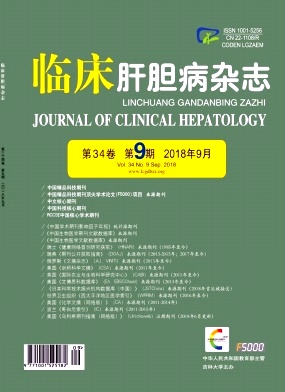Objective To investigate the mechanism of action of Compound Yindan Decoction on acute intrahepatic cholestasis induced byα-naphthyl isothiocyanate (ANIT) in rats. Methods A total of 108 male Sprague-Dawley rats were randomly divided into normal control group, model group, high-, middle-, and low-dose traditional Chinese medicine (TCM) groups, and positive control group, with 18 rats in each group. According to the time of sampling, each group was divided into 24-hour, 48-hour, and 72-hour subgroups, with 6 rats in each subgroup. The model group, the TCM groups, and the positive control group were given a single dose of 2% ANIT (100 mg/kg/d) by gavage to establish the model, and the normal control group was given an equal volume of salad oil by gavage. At 2 hours after modeling, the high-, middle-, and low-dose TCM groups were given Compound Yindan Decoction 1 ml/100 g body weight once a day by gavage at a dose of 24. 48 g·kg-1·d-1, 12. 24 g·kg-1·d-1, and 6. 12 g·kg-1·d-1; the model group and the normal control group were given an equal volume of normal saline once a day by gavage; the positive control group was given ursodeoxycholic acid (UDCA) solution 1 ml/100 g body weight once a day by gavage at a dose of 67. 5 mg·kg-1·d-1. The rats were sacrificed at 24, 48, or 72 hours after modeling, and RT-q-PCR, Western blot, and immunohistochemistry were used to measure the expression of farnesoid X receptor (FXR) and multidrug resistance-associated protein 3 (MRP3) in liver tissue. A one-way analysis of variance was used for comparison between multiple groups, and LSD-t test was used for further comparison between two groups. Results According to the results of RT-q-PCR, compared with the normal control group at each time phase, the model group had a significant reduction in the mRNA expression of FXR (all P<0. 05) ; compared with the model group at each time phase, all the TCM groups and the UDCA group had a significant increase in the mRNA expression of FXR (all P < 0. 05) ; the high-dose TCM group had significantly higher mRNA expression of FXR than the middle-and low-dose TCM groups at each time phase (all P < 0. 05) . Compared with the normal control group at each time phase, the model group had a significant increase in the mRNA expression of MRP3 (all P < 0. 05) ; compared with the model group at each time phase, the UDCA group and all the TCM groups except the 24-hour low-dose TCM subgroup had a significant increase in the mRNA expression of MRP3 (all P <0. 05) ; the 48-and 72-hour high-dose TCM subgroups had significantly higher mRNA expression of MRP3 than the middle-and low-dose TCM groups (all P < 0. 05) . According to the results of immunohistochemistry, compared with the normal control group at each time phase, the model group had a significant reduction in the protein expression of FXR (all P < 0. 05) ; compared with the model group, the 24-hour high-, middle-, and low-dose TCM subgroups and the UDCA group at each time phase had a significant increase in the protein expression of FXR (all P < 0. 05) ; the high-dose TCM group had significantly higher protein expression of FXR than the middle-and low-dose TCM groups at each time phase (all P < 0. 05) . Compared with the normal control group at each time phase, the model group had a significant increase in the protein expression of MRP3 (all P < 0. 05) ; compared with the model group at each time phase, the UDCA group and all the TCM groups except the 24-hour low-dose TCM subgroup had a significant increase in the protein expression of MRP3 (all P <0. 05) ; the high-dose TCM group had significantly higher protein expression of MRP3 than the low-dose TCM group at each time phase and the 72-hour middle-dose TCM subgroup (all P < 0. 05) . According to the results of Western blot, compared with the normal control group at each time phase, the model group had a significant reduction in the protein expression of FXR (all P < 0. 05) ; compared with the model group at each time phase, the high-, middle-, and low-dose TCM groups and the UDCA group had a significant increase in the protein expression of FXR (all P < 0. 05) ; the high-dose TCM group had significantly higher protein expression of FXR than the middle-and low-dose TCM groups at each time phase (all P < 0. 05) . Compared with the normal control group at each time phase, the model group had a significant increase in the protein expression of MRP3 (all P < 0. 05) ; compared with the model group, the 48-and 72-hour middle-and high-dose TCM subgroups and the UDCA group had a significant increase in the protein expression of MRP3 (all P < 0. 05) ; at 48 and72 hours, the high-dose TCM group had significantly higher protein expression of MRP3 than the middle-and low-dose TCM groups (all P < 0. 05) . Conclusion Compound Yindan Decoction has a therapeutic effect on rats with acute intrahepatic cholestasis induced by ANIT through gavage, possibly by upregulating the mRNA and protein expression of FXR and MRP3.













 DownLoad:
DownLoad: